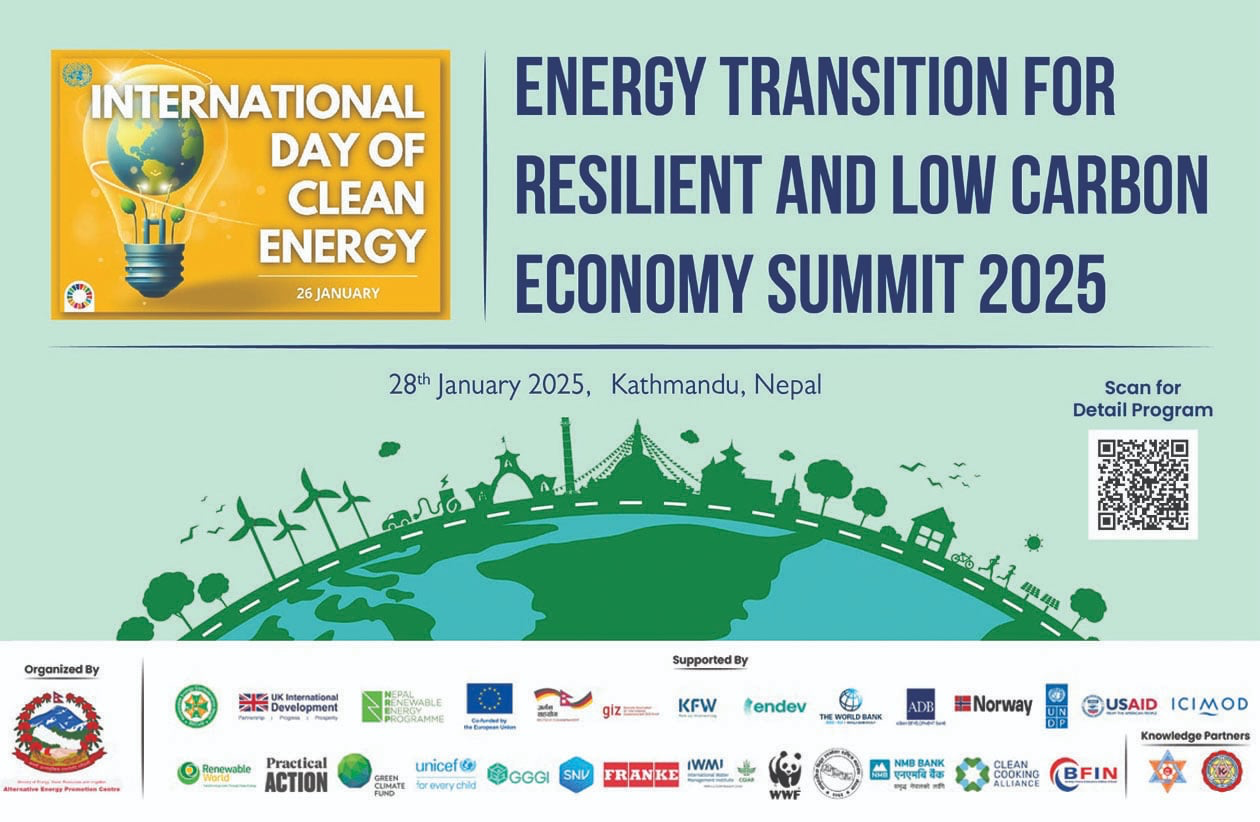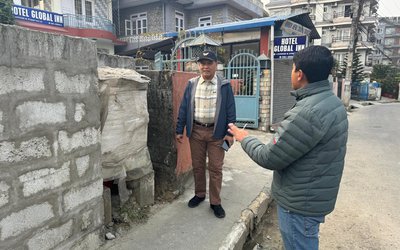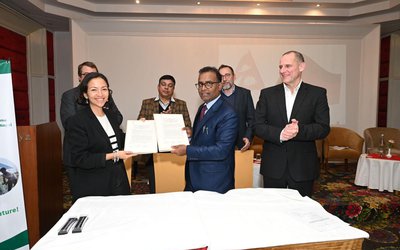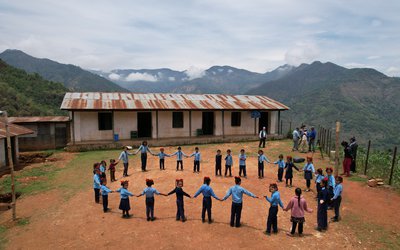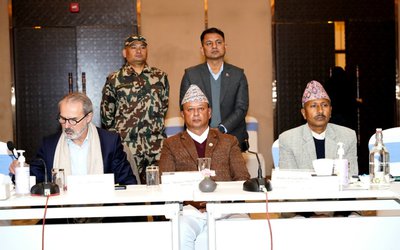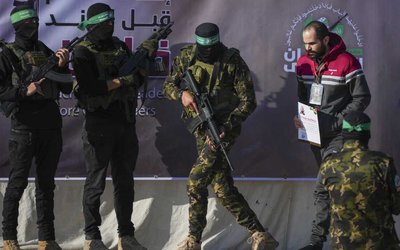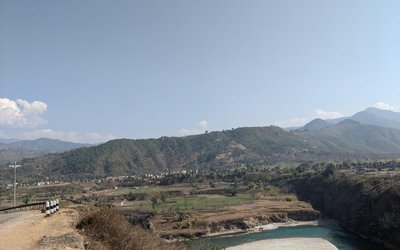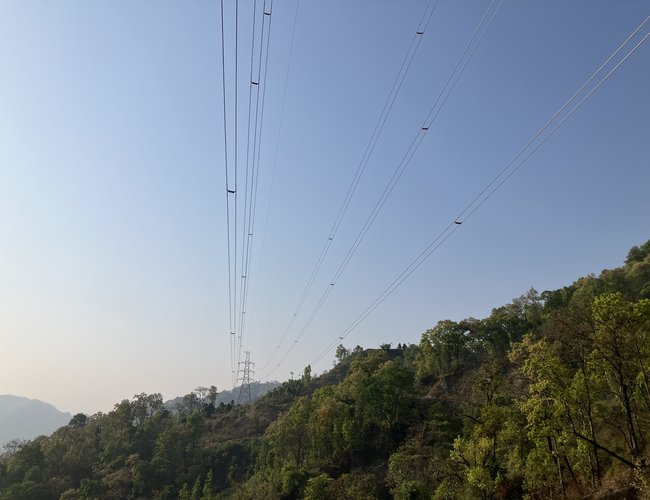
The 220 kV double circuit transmission line for the Kaligandaki Corridor has the necessary equipment in place to deliver electricity up to 1200 MW. The 220 kV transmission line for the Kaligand Corridor has finally reached its completion.

The 220 kV double circuit transmission line for the Kaligandaki Corridor has the necessary equipment in place to deliver electricity up to 1200 MW. By doing this, the hydropower projects envisioned for the Kaligandaki and its tributaries will be integrated into the grid for the entire country.
A 140 km double circuit transmission line that runs from the Annapurna Rural Municipality 3 Dana Substation in Myagdi through Parbat, Baglung, Syangja, Palpa, and Rupandehi before terminating at Sunwal Municipality 13 Bhumhi in Nawalparasi (Bardghat Susta Paschim) has been built. This infrastructure upgrade has made it possible to transmit about 1200 megawatts of electricity.
During construction, the Nepal Electricity Authority split the transmission line into two halves. Currently operational is the first segment, which covers the approximately 40 kilometers between Dana and Khurkot in Parbat's Kushma Municipality-2. Both the Khurkot and Dana substations, with capacity of 220 132 kV and 220 132 33 kV, respectively, are in use. The writing is objective and uses American English language varieties and standard academic style. Additionally, each substation contains power transformers with a 100–100 MVA capacity. Abbreviations for technical terms are defined.

As of Monday, the transmission line from Kushma to the New Butwal substation had been finished, charged, and put into service.
For a 220 kV four-circuit (multi-circuit) line from Sunwal municipality-13 Badera to New Butwal substation, 236 towers have been built in this segment. At New Butwal, a 220 kV substation has also been built.
The second portion of the Kaligand Corridor Transmission Line is now operating after completion of construction. According to NEA’s managing director, Kulman Ghisingh, the operationalization of the Kaligand corridor transmission line will raise voltage in Nawalparasi, Rupandehi, and other places while also increasing the reliability of the integrated power system.
The transmission line's limited capacity, according to Managing Director Ghising, prevented the Mistri Khola hydropower project in Myagdi from receiving the entire quantity of electricity. The transmission line's limited capacity, according to Executive Director Ghising, prevented the Mistri Khola hydropower project in Myagdi from receiving the entire quantity of electricity. He nevertheless voiced his belief that a solution might be found to this problem.
As a result of the hydroelectric projects (Mistri Khola, 42 MW, Ghar Khola, 14 MW, Thapa Khola, 13.6 MW, and Ghalemdi Khola, 5 MW), the issue of electricity transmission in the region has been overcome.
It is simpler to export excess electricity to India beyond local demand because MW) create 74.6 MW of electricity that is totally connected to the Dana substation. The electricity produced by the aforementioned projects is used locally, and any excess is sent to the recently built Butwal substation via the Kaligandaki Corridor transmission line.
The same transmission line of the Jodi National System will also carry the electricity generated by the hydroelectric projects currently being built or planned for development in Mustang, Myagdi, and surrounding areas.
According to project manager Chandan Ghosh, the Covid-19 epidemic, local impediments, and delays in the tree felling permit procedure have all hindered the development of the Kaligand corridor transmission line.
For more than three years, residents of Phalewas Municipality-6 in Parbat have obstructed the building of the transmission line. They want the transmission line route changed, arguing that the development would harm Devisthan's schools and stadiums. The building of four transmission line towers in Phalewas has been hampered by the nearby barrier.
The transmission line was effectively built thanks to diligent project effort and effective authority administration. The Kushma-New Butwal section's construction began in December 2074 after a contract with the Indian company L&T was secured in November 2074.

The Power System Expansion Project of the South Asia Sub-Regional Economic Cooperation (SASEC) of the Asian Development Bank granted concessional loans to the Nepali government and authority to support the Kaligandaki Corridor Transmission Line Project. The anticipated cost of the project is 11 billion rupees.
The infrastructure for the 220 kV transmission line from Hetaunda to New Butwal will be ready for use after the line from the New Butwal substation to Bardghat has been built. The new Butwal-Bardghat transmission line, which will be 21 km long, is now being built; it is expected to be finished in December 2019. Additionally, the 220 kV transmission line that runs through Bharatpur from Hetaunda to Bardghat has already been built and is operating.
For the exchange of power between India and Nepal, the Butwal-Gorakhpur 400 KV international transmission line is planned for development.

Using the current transmission line, the extra electricity used in the nation will be sent to India. With money from the Millennium Challenge Corporation (MCC), a 400 kV substation will be built in New Butwal and the Nepal leg of the Butwal-Gorakhpur transmission line will be constructed.
- Electricity Supply has commenced in Pokhara Using An Underground Distribution System
- Feb 02, 2025
- Medical plane crash in Philadelphia kills all 6 on board and one on ground
- Feb 02, 2025
- Weather Forecast: Mainly Fair In The Rest Of The Country
- Feb 02, 2025
- IME Group's Ila Comfort Hotel has commenced operations in Baglung District.
- Feb 01, 2025
- Maurice Herzog’s Celebrated Book Annapurna : Premier 8000 Soon in Nepali
- Feb 01, 2025
